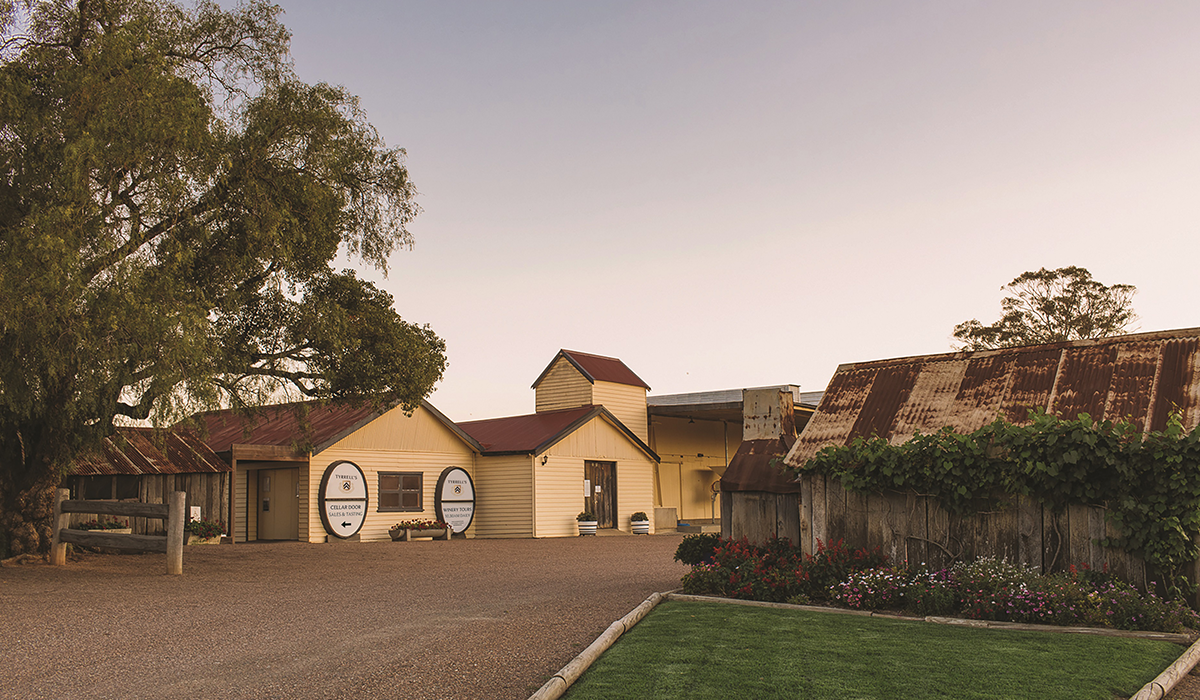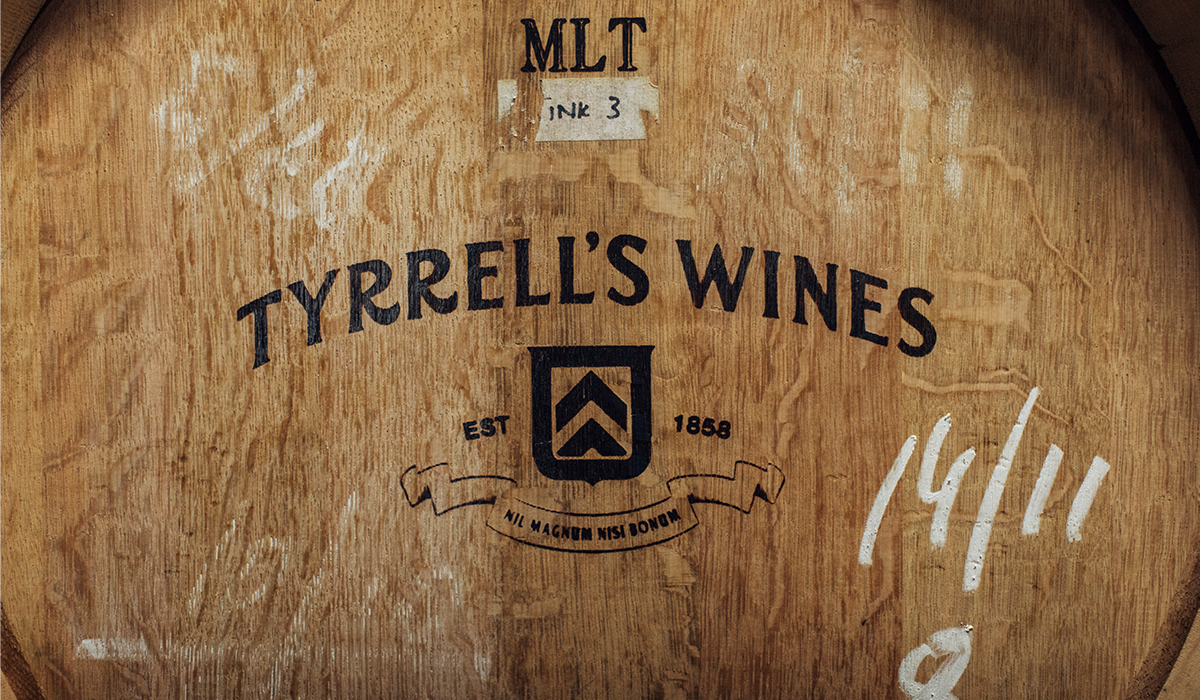Tyrrell's Vat 47 Chardonnay has had more twists and turns in its 50-year history (from 1971 to 2021) than any other Australian barrel-fermented white wine before or since. Initial confusion about its identity was due to the absence of statutory regulation of label claims regarding vintage, place of origin and varietal composition. Thus, when the first blends of chardonnay and semillon were made by Tyrrell's and labelled ‘pinot riesling’, the wines were in fact chardonnay blended with Hunter semillon. The most confusing practices by the broader industry were the use of semillon labelled as White Burgundy, Chablis, Hock and riesling, and shiraz as Claret or (Red) Burgundy.
In 2022 the Hunter Valley produced 1789 tonnes of chardonnay grapes with a value of $2.9 million. The national figure for chardonnay was second only to shiraz's 358,007 tonnes with a value of $202 million. If nothing else, it emphasises the Lilliputian size of the Hunter Valley's contribution to the national share of the wedding cake, and its relatively late arrival on the scene.
One enduring reason for that has been the iron-clad grip of the Phylloxera Board of South Australia (now Vinehealth Australia) and its success in preventing any incursions of phylloxera from any other state. Though at the end of the day, most states are struggling with eutypa, a fungal disease with similar effects to that of phylloxera.
 Bruce Tyrrell.
Bruce Tyrrell.
On the opposite side comes the good news that climate change is not leading to any deleterious impacts on Vat 47 or other high-quality Hunter Valley chardonnays. There's no question that Vat 47 has shown the way for dozens of wineries making immaculate wines, unthinkable 40 to 50 years ago. Why? Chardonnay has its ancestral roots in Burgundy, as befits any cool-climate variety. Theoretically, a warming climate should be tolling the bell for its reputation, but the wine shows speak otherwise: since the 1971 vintage, Vat 47 has been awarded 30 trophies and 241 medals.
The first Vat 47 Chardonnays made by Tyrrell's were cold fermented in stainless-steel tanks with cultivated yeast and a generous percentage of semillon. Assessing these (and other) Hunter Valley chardonnays in the late 1980s, the Vat 47s of ’71, ’79 and ’84 were still remarkably fresh despite having been matured in oak.
American oak was slowly replaced by French (with part fermentation in new French barriques) and by the end of the ’80s malolactic fermentation, lees stirring and skin contact were becoming widespread in small- to medium-sized wineries. All of these 'add-ons' consumed space and delayed the time taken to guide the wine from barrel to bottle. The larger wineries were forever seeking ways to simplify and speed up vinification – and still do.
 The Tyrrell's cellar door in the Hunter Valley.
The Tyrrell's cellar door in the Hunter Valley.
Another perspective comes from a note I was sent by Bruce Tyrrell in the lead up to the 2021 celebrations. Max Schubert suffered scorn from all and sundry when he released the first vintages of Grange Hermitage (1952, after a trial in 1951). The 1973 was the first Vat 47 fermented and matured in new French oak. Bruce’s father Murray Tyrrell recorded some of the scorn, such as, "Well, Murray, you have messed that up – no one in Australia will ever drink white wine with oak in it." The chair of judges at The Brisbane Wine Show was also quoted as saying, "The wine is either volatile and oxidised, or it's the greatest white wine I have ever seen in Australia." It received six points out of 20 but went on to win the trophy for Best White Wine of Show later that year.
The note goes on to say (with some editing) that the 1970s had favourable input from Len Evans, wine judge Rudy Komon and John Avery, MW. The ’80s were marred by self-inflicted wounds, namely inappropriate choice of type and amount of oak and malolactic fermentation. Unsurprisingly, the wines developed more quickly than those of earlier vintages. Andrew Spinaze had joined the winemaking team in 1980, and progressively moved the focus back to the more elegant wines of earlier decades, culminating in his appointment as chief winemaker in 1999.
 There's been five generations of the Tyrrell family at the helm of the winery since 1858. Image credit: Wine Australia.
There's been five generations of the Tyrrell family at the helm of the winery since 1858. Image credit: Wine Australia.
Even more work saw the choice of barrels from specific tonnelleries in Burgundy. No less important was a change in the estate vineyards allocated to Vat 47, with 30 years of experience in shaping the 'new' Vat 47. In the earlier years it came from the Short Flat Vineyard, the NVC (New Vine Cuttings) Vineyard and 100-year-old plantings on the HVD (Hunter Valley Distillery) Vineyard, which had been purchased by Tyrrell's from Penfolds.
In 2009, HVD was taken out of Vat 47, which is now 100 per cent Short Flat from blocks planted between 1968 and 2001. These days Vat 47 is handpicked into two bins at a time, with workers stationed around the bins as the grapes arrive, removing leaf and cane fragments and any grapes affected with botrytis or mildew. A key decision has been the reintroduction of basket pressing, which reduces the yield of juice per tonne.
There has been an unbroken line of five generations of the Tyrrell family at the helm of this remarkable family business since 1858, which began when Edward Tyrrell successfully applied for a 134ha land grant, which included patches of the finest red soil over a limestone subsoil. His first challenge was to clear the sloping blocks of ironbark eucalyptus, then work the soil to the point where he could plant the first few rows of shiraz rootlings he was able to procure. Edward made his first few litres of wine in 1864. Today Tyrrell's produces 150,000 cases of premium wines from 150ha of estate plantings and a network of long-term suppliers.
This article appears in issue #72 of Halliday magazine. Become a member to receive the print publication as well as digital access.